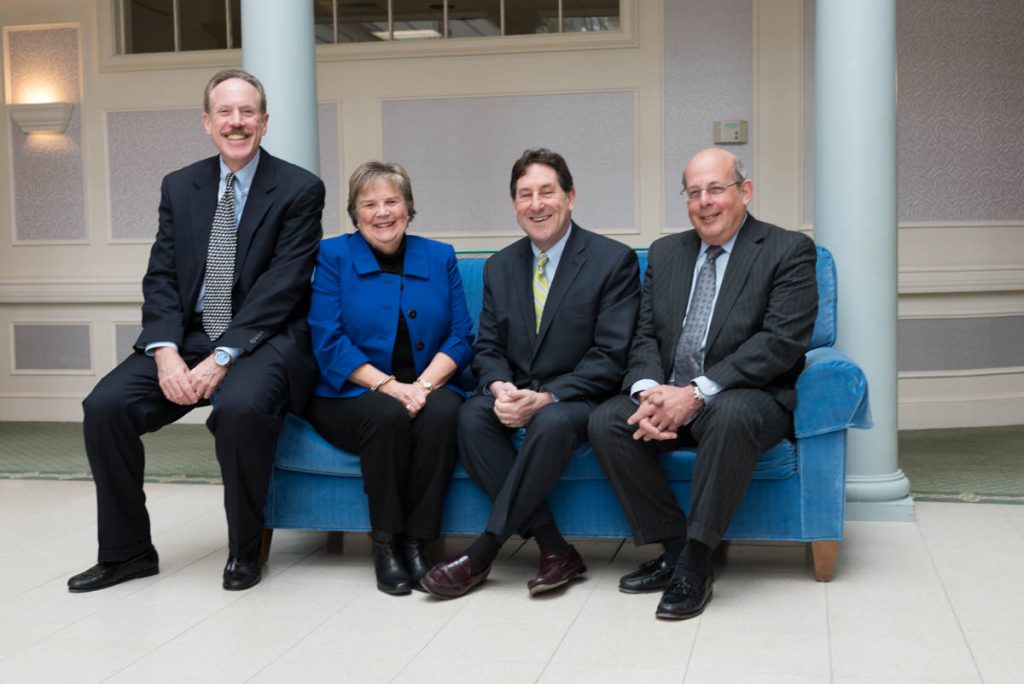
High School
In honor of Sam’s legacy, the Sam L. Cohen Foundation has made its largest gift ever—$1.5 million—to support building a brand-new Healthcare Center at The Cedars that will provide truly person-centered care.
“Sam L. Cohen was, first and foremost, a people person. When the Foundation was first established, we researched the gifts Sam had made during his life,” explains Jeff Nathanson, President of the Sam L. Cohen Foundation. “Sam wasn’t here to tell us what he wanted and we hoped to discover what inspired his legendary, lifelong giving to guide us in our grant making.
It quickly became very clear to us that Sam didn’t give to organizations or ideas. Sam gave to people.”
SAM L. COHEN WAS THE LIFE OF the Jewish community of Biddeford, Maine. He was also its heart. More than ten years after his passing, his gregarious personality—and his generous philanthropy—remain legendary.
The Sam L. Cohen Foundation has continued his legacy by donating over $20 million to alleviate poverty, foster community, provide opportunity and promote equality in southern Maine since 2005. To mark the Foundation’s first decade, its directors began searching for an opportunity to make a larger, even more meaningful gift.
“It wasn’t easy,” Jeff admits. “That one big signature gift eluded us. Then we heard about the The Cedars Grow Bold With Us Campaign. We knew immediately that the way this new Healthcare Center will be built—to be a real home for seniors—would make Sam so proud.”
Person-centered care for seniors is the perfect way to honor Sam
“I do wish Sam were here to see the impact of this legacy gift,” agrees Kathryn Callnan, President and CEO of The Cedars. “He personified community and personal connection, yet his generation’s only options in later life were to struggle at home or to receive institutional care. This gift will let today’s seniors make personal choices about their daily life and health in a beautiful residence that will truly be their home. The Cedars will transform how this country sees aging.”
Sam’s legacy gift celebrates and continues the Cohen family’s commitment to The Cedars
The Cedars has long been able to count on the Cohens. Supporting Maine’s seniors is a family tradition that began with Sam’s beloved mother, Cecilia, a lifelong member of The Cedars Auxiliary. When The Cedars relocated to our current campus location from Munjoy Hill, Sam dedicated the new facility’s executive office and physical therapy area. And in 2009, a generous gift from the Foundation helped to establish The Sam L. Cohen Rehabilitation Center at The Cedars.
“Sam already helped to make The Cedars Maine’s largest Medicare provider and to put thousands of seniors on the road to recovery quickly,” Kathryn explains. “His legacy gift will now make it possible for us to customize our care based on each senior’s individual choices and to provide private rooms for our residents. Thanks to Sam, seniors will have a real home—and The Cedars will set a new standard for an entire industry.”
This gift creates another connection between Sam and his best friend, Bernard Osher, on The Cedars campus
Sam and his best friend, Bernard Osher, were inseparable during their lives and equally committed to supporting The Cedars. This history gives the legacy gift additional emotional resonance for everyone involved.
“Barney’s legacy gift helped build The Osher Inn, the assisted living residence at The Cedars,” Jeffrey explains. “Now Sam’s legacy gift will help to build a new, cutting-edge Healthcare Center right next to it. It wasn’t part of our decision-making process, but the proximity of those buildings means a lot to me personally—that Sam and Bernie will be so close together again.”
When The Cedars asked the Foundation to grow bold with us, they responded by making their largest gift yet
Jeffrey counts himself so lucky to have grown up with Sam as a family friend, a trusted advisor and a lifelong mentor. “At the end of every talk or breakfast we ever shared, he would ask me, ‘Do you need anything?’” Jeffrey remembers fondly.
“I never did, but he always asked. He asked this of everyone he met. Whenever anyone took him up on it, he gave.”
The Foundation has made their historic $1.5 million legacy gift to build the new, person-centered healthcare center in that same spirit. Jeffrey has no doubt that if Sam were here today to hear about The Cedars Grow Bold With Us Campaign, he would support it wholeheartedly.
“Sam would be so pleased and so proud to grow bold with The Cedars,” he says. “And he would want us all to join him.”


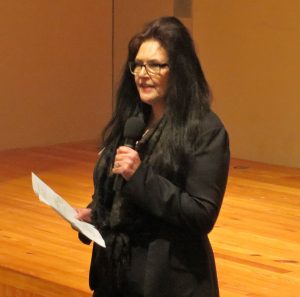 Angie Hunt, Chief Operating Officer at The Cedars was recently invited by Leading Age Missouri to share her expertise on post-acute care and value-based purchasing. On Wednesday, May 8 at the Third Annual Summit for Acute and Post-Acute Care Providers: Insights and Perspectives on Care Coordination and Value-Based Payment, Angie spoke on a panel to discuss Care Collaboration and Value-Based Care.
Angie Hunt, Chief Operating Officer at The Cedars was recently invited by Leading Age Missouri to share her expertise on post-acute care and value-based purchasing. On Wednesday, May 8 at the Third Annual Summit for Acute and Post-Acute Care Providers: Insights and Perspectives on Care Coordination and Value-Based Payment, Angie spoke on a panel to discuss Care Collaboration and Value-Based Care.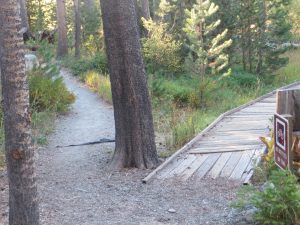 You can do more than you ever thought possible. Planning your estate allows you to both fulfill obligations and make gifts. It’s called sequential planning.
You can do more than you ever thought possible. Planning your estate allows you to both fulfill obligations and make gifts. It’s called sequential planning.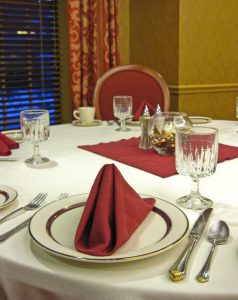
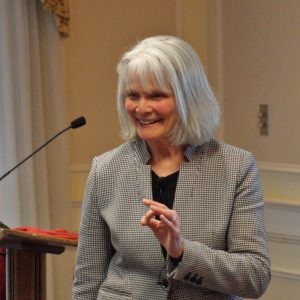 We had the opportunity to talk with Dr. Susan Wehry, Chief of Geriatric Division of Primary Care for the School of Osteopathic Medicine at University of New England prior to her presentation at The Cedars Annual Meeting on May 2.
We had the opportunity to talk with Dr. Susan Wehry, Chief of Geriatric Division of Primary Care for the School of Osteopathic Medicine at University of New England prior to her presentation at The Cedars Annual Meeting on May 2.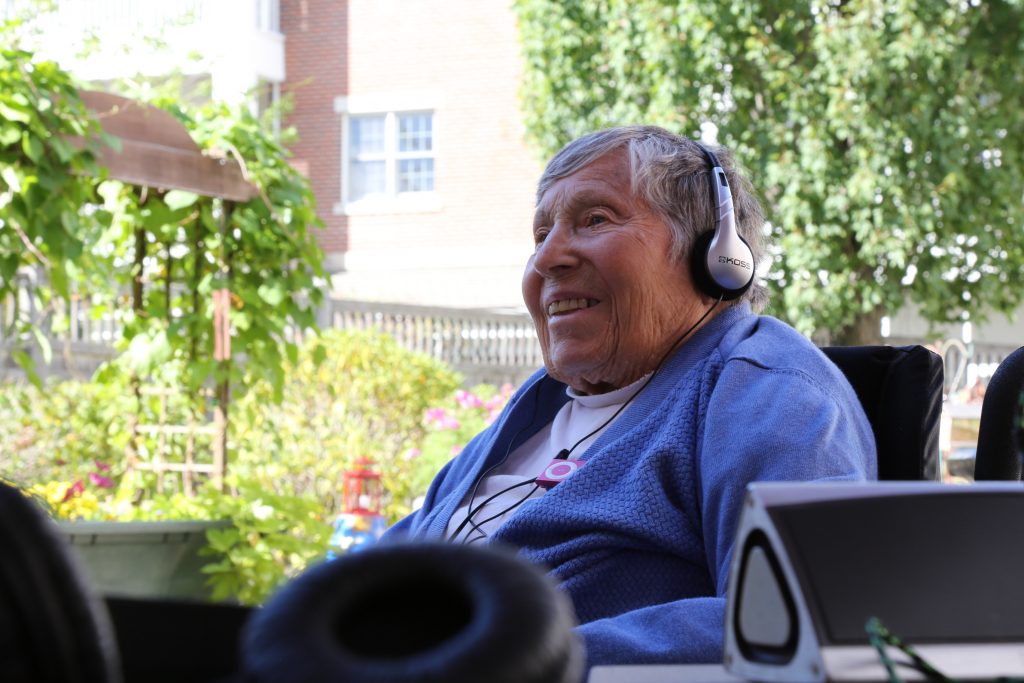 “We experience a deeper connection to events in our lives that we associate with music,” says
“We experience a deeper connection to events in our lives that we associate with music,” says  When
When 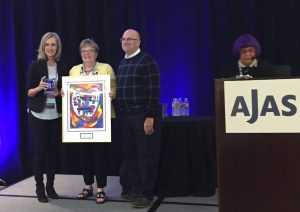
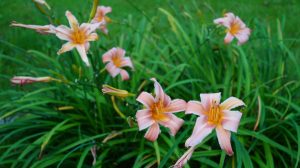 Whether you are an avid gardener of simply water the plants in your window, you know that there are two kinds of flowers. “Annuals” are the ones you plant every year. They are beautiful and varied, but come autumn, they are used up.
Whether you are an avid gardener of simply water the plants in your window, you know that there are two kinds of flowers. “Annuals” are the ones you plant every year. They are beautiful and varied, but come autumn, they are used up.